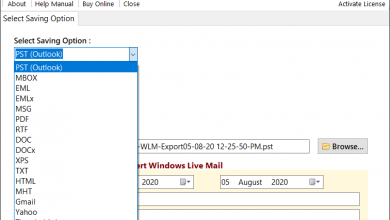7 Lean Software Development Principles You Should Know About

The principles of lean software development may seem strange or even heretical to software engineers at first. Still, the philosophy behind lean software development makes total sense once you’ve gotten used to it.
To help you get on board with the lean method, we will review some of the essential principles of lean software development and what they mean for you and your team as developers.
We’ll also give you examples of how these principles play out in real-world products, so let’s jump right in. Here are the top 7 lean software development principles you should know.
1) Reducing the amount of work in progress
There are two approaches to reducing work in progress. First, identify problems in your current workflow, and then fix them one by one. Second, decide on a capacity limit for each step of development so that you can push back against engineers who want to take on more features or even more complex features.
The goal is to ensure that you’re never over-resourced for any given project. That will help reduce risks in software development and increase your ability to manage them effectively.
This method allows us to control how much we can deliver. This helps us ensure that our team has focus while also ensuring they have enough time to complete what they started.
And if things do get out of hand, it helps us keep an eye on how much work is being added to a specific project at any given time. We need something to gauge whether or not we’re taking on too much risk at once—especially when new features are involved.
2) Removing waste
Eliminating waste is a key principle of lean software development. Waste can be defined as anything that doesn’t contribute to customer value, so it’s not surprising that one of its biggest sources in software is process waste, such as duplicate tasks and unnecessary documentation.
In addition to reducing waste, another goal of lean software development is to reduce cycle time—the amount of time between work begins on a product and when it’s ready for release. To reduce cycle time, look for ways to shorten your project schedule or reduce overhead costs like meetings or paperwork.
3) Continuous improvement
As I’ve written about before, continuous improvement is one of seven key lean principles. It means that you are constantly working to improve your process by understanding and eliminating waste.
Of course, one of the main risks in software development is not delivering on time, so a continual improvement approach can help reduce these issues.
If you keep an eye out for opportunities to streamline processes, automate tasks or eliminate bottlenecks, there’s less chance of things slipping through the cracks.
4) Pulling over pushing
Learn to communicate and motivate your team effectively. When a senior or experienced employee needs help on a project, ask open-ended questions like Why do you think that? or How do you think we should solve it? This will allow them to share their wisdom while guiding them in solving issues themselves.
By pulling over pushing people along, managers can mitigate risks in software development. Pulling rather than pushing also allows teams to develop stronger relationships. Through these relationships, teams become more self-sufficient and can take ownership of projects rather than being assigned tasks by management.
In addition, they’ll have greater confidence in their abilities, which is essential for moving forward with projects quickly and efficiently without any additional oversight from management.
5) Just in time concepts
In lean manufacturing, manufacturing is viewed as a process that produces value only after the waste has been removed. This is accomplished using an understanding and effective management of a demand-driven production and delivery flow.
The goal of JIT (demand-driven) production is to deliver precisely what you need and when you need it just in time. It does not mean producing things faster than before; rather, it means not producing until you have orders for your products or services.
It also means reducing inventories to zero or near zero. Inventory represents work in progress or WIP and increases cost while tying up cash.
6) Value stream mapping
A valuable tool for analyzing your company’s productivity, value stream mapping helps you identify how long it takes to move a product or service from concept to customer.
The process involves sitting down with all of your employees and stakeholders and drawing out, in detail, each step of a customer’s experience with your brand. By doing so, you can pinpoint where inefficiencies are occurring—and create solutions that help reduce waste and boost efficiency.
If you have time, try implementing some changes as well; then review your results after 30 days to see if they impact productivity. (Note: This strategy is also helpful when applied to individual processes within your business.)
7) Kanban systems
They’re like a to-do list for developers, enabling them to create lists of tasks in a format that makes sense. One of their key benefits is that they help teams prioritize by moving higher-value items to the top and promoting faster delivery, improving your product’s agility and customer satisfaction.
Another benefit is that Kanban systems are flexible. If you find that certain activities aren’t working for your team, you can alter them quickly without throwing out all of your progress.
For example, if it turns out that a task isn’t taking as long as you thought it would, you can add more functions to it. And if something comes up and you need to shift priorities on short notice, Kanban allows flexibility so your team can adapt quickly.
Read Also: The Top 10 Chatbot Trends To Keep an Eye On in 2022
Conclusion
Whether you’re interested in lean software development, there are plenty of takeaways for software teams. The principles lend themselves to more efficient and effective processes, better communication, and stronger relationships with your development team.
If you’re looking to improve how your team works together, you might consider adopting some of these lean principles in your next sprint. But don’t just try one or two—commit to making all seven a part of your process! It will be worth it!






